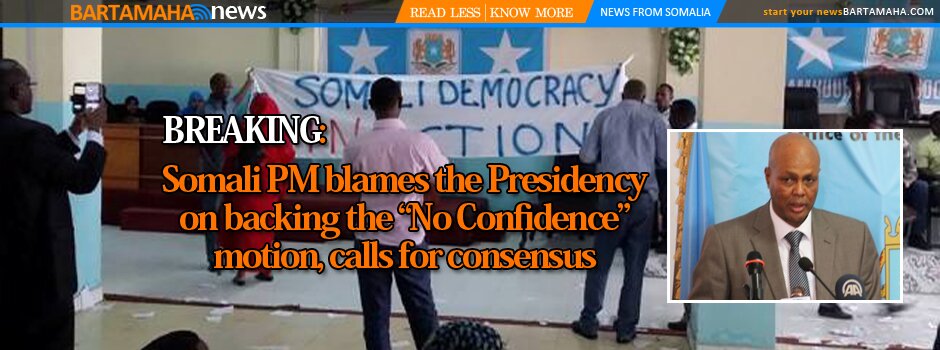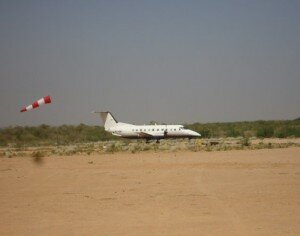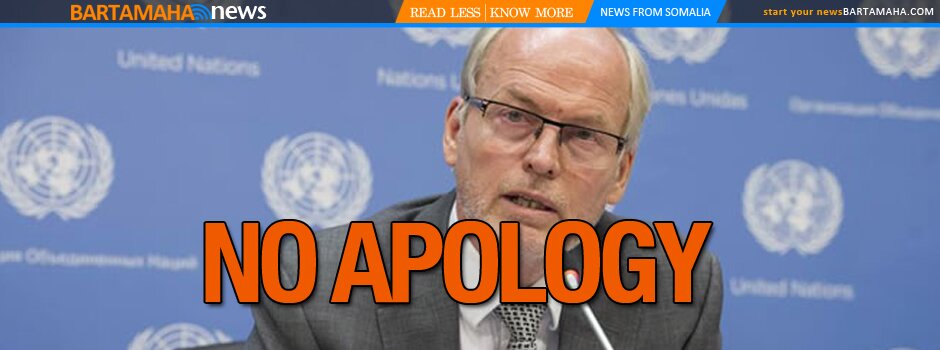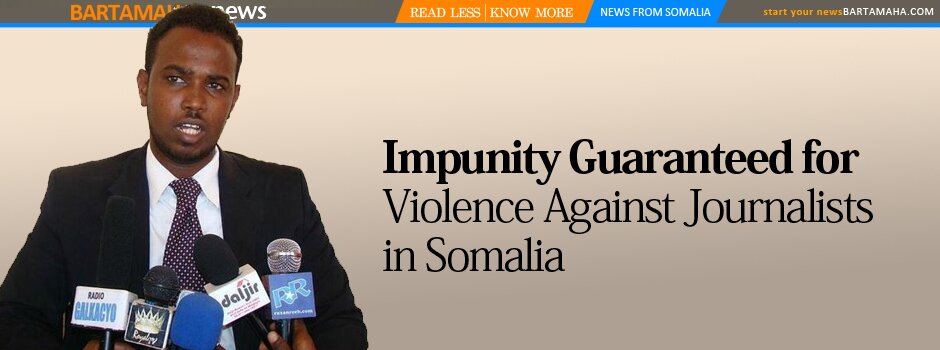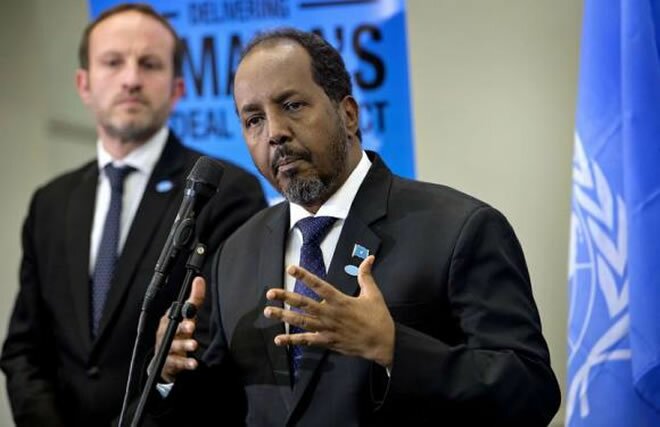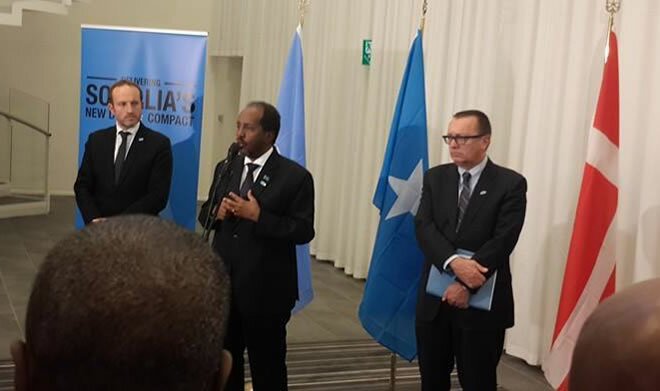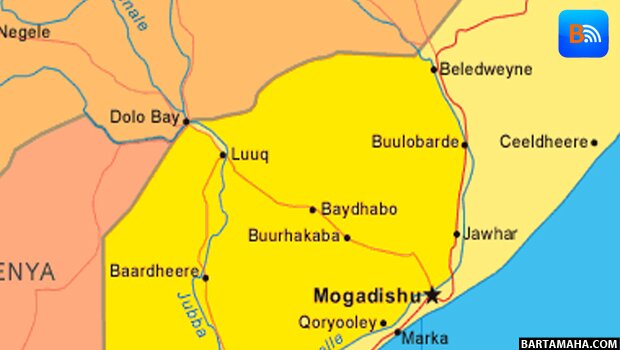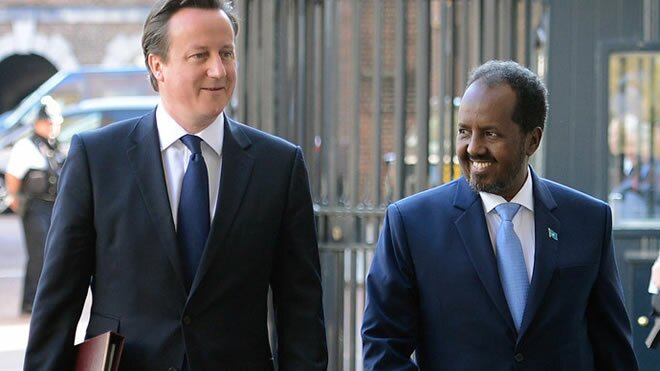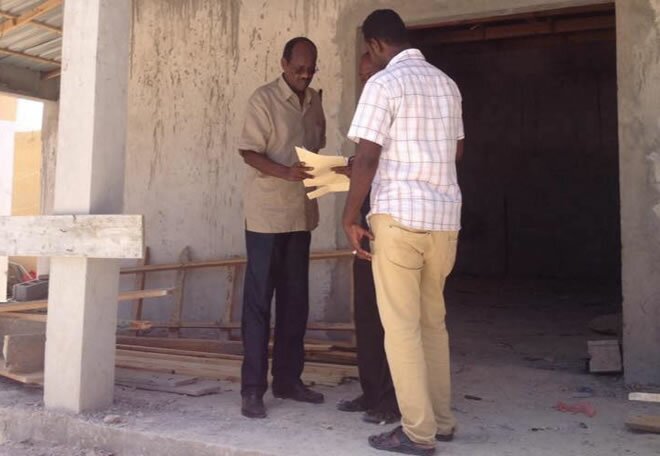Kenya has no choice over Al-Shabaab

Mogadishu residents converge around the body of a government soldier who caught fire during intense fighting.
With fighting raging in Somalia, pirates running amok in the Indian Ocean and the internationally recognized government about to fall, it would appear that the Al Shabaab Islamic movement will soon be having the last laugh.
Though Kenya is a key backer of President Sheikh Sharif Ahmed, there is nothing that can be done to save his position. Al-Shabaab is growing from strength to strength capturing territory and key towns in central and southern Somalia. Recently, the Islamic youth group gained significant potency when it joined forces with fighters from the Hizbul al-Islam party. Meanwhile, Somali government soldiers are reportedly suffering from poor morale in the face of inevitable defeat.
Kenya has increased military patrols along its porous border with Somalia. However, with the Somali ethnic group straddling both sides of the border, movement has continued unhindered despite the fact that the border is officially closed. The Somali people move freely as they have family on both sides of the long, desert border. As a measure of how difficult it is for the Kenyan government to secure its borders, one of just a dozen of its Hughes 500 military helicopters crashed last month in unexplained circumstances.
As Kenya joins the United States and Ethiopia in supporting President Sheikh Sharif, the question arises as to how to deal with Al-Shabaab. That is, if anything can be done about the powerful movement.
Al-Shabaab is an offspring of the Union of Islamic Courts, the Islamist organization that created Somali’s first home-grown government in 2006. The United States and Ethiopia accused the Islamists of harbouring Al-Qaeda. In December 2006, Ethiopia invaded Somalia with US backing and drove the Islamists out of Mogadishu. At the time, Sheikh Sharif was among the Islamists who included Sheikh Hassan Dahir Aweys.
Kenya contributed to the invasion by sealing its border to prevent Islamist fighters from fleeing. Hundreds of Islamist fighters were massacred by Ethiopian and American aircraft as they were stranded at the border points.
Sharif and Aweys fled to Eritrea while the internationally recognized Transitional National Government took over the capital, Mogadishu. However, January 2007 marked the beginning of the worst phase of fighting since Somalia’s collapse in 1991. An Iraq-style insurgency erupted as Al-Shabaab made itself felt for the first time in Somalia. By December 2008, fighting was so bad that the Ethiopians fled the country.
The Transitional government fell into political chaos and somehow, Sheikh Sharif ended up as President. However, by accepting to work in the US-backed Transitional government Sheikh Sharif fell out with Sheikh Aweys, his former ally. Indeed, it is Aweys who is now openly leading Al-Shabaab and Hizbul al Islam in fierce insurgency against the Somali government.
What can Kenya do to stop Al-Shabaab from taking over power in Somalia and declaring the Islamic Republic of Somalia?
The answer is: NOTHING.
Kenya lacks the military capability to engage Al-Shabaab in a long-drawn engagement inside Somalia. Stronger armies including the United States and Ethiopia have not succeeded. Kenya, with 20,000 troops led by a wobbly coalition government, cannot stomach an engagement that could last years. The fact that the Kenya Navy is yet to capture a single Somali pirate just goes to prove our military capabilities.
The safest option is to keep the border closed but this does not work. The border is hundreds of kilometres long across harsh, semi-desert terrain. The local Somali people are very familiar with the territory and are crossing in and out of Kenya despite the “closure.†Though the border was officially closed in December 2006, smuggling of consumer goods, foodstuffs and firearms continues with impunity. Human trafficking has taken root in the area.
By any interpretation, it appears that an Islamic Republic of Somalia is going to become a reality. Somalia will have some measure of Shariah administration, something that the US-backed Transitional government has accepted. The tendency for Somali’s neighbours to sponsor so-called secular movements is the reason why chaos reigns in Somalia.
An Islamic government in Somalia does not necessarily mean that Kenya is under threat. Though Al-Shabaab has threatened to annexe the Somali-dominated North Eastern Province of Kenya, this is unlikely to happen in practice. Somalis have extensive business and family interests in Kenya that they would not wish to disrupt. During the 20 years of chaos that Somalia has experienced, Kenya has provided investment opportunities for Somali business, money that is later ploughed back into Somalia.
An entire generation of young Somalis got their education in Kenya and have come to appreciate Kenyans. In a sense, Kenya has provided Somalis with a place of refuge where they can recuperate from the fighting back home. It has even been reported that Somali fighters and pirates have been seen in Nairobi suburbs taking a much-needed physical and psychological retreat.
From the 2006 experience, it is obvious that only an Islamic leadership will have the capacity to rescue Somalia from anarchy. The world should engage with them in a dialog that will result in an Islamic Somalia at peace with its neighbours. Otherwise, it is futile to continue sponsoring warlords in fighting a losing battle with Islamic militants who are getting bolder by the day.
Source: Nairobi Chronicle
Comments
comments
 Calendar
Calendar





